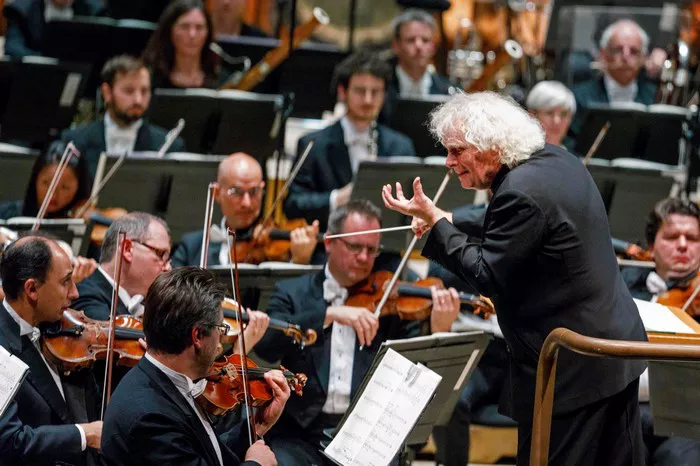Classical music is a genre that has stood the test of time, captivating audiences for centuries with its depth, complexity, and emotional resonance. Within this vast musical landscape, there are certain compositions that have risen above the rest to become iconic and beloved by people from all walks of life. In this article, we will explore the five most famous pieces of classical music, delving into their history, significance, and enduring appeal.
1. Beethoven’s Symphony No. 9 in D Minor, Op. 125 – “Choral”
Ludwig van Beethoven’s Symphony No. 9, often referred to as the “Choral Symphony,” is an unparalleled masterpiece in the world of classical music. Composed between 1817 and 1824, it marked a groundbreaking moment in the history of symphonic music. This monumental work, featuring four movements, stands out not only for its musical innovation but also for the inclusion of vocal soloists and a choir in its final movement.
The Symphony No. 9 is celebrated for its powerful and emotive melodies, particularly the famous “Ode to Joy” in the final movement, which has become an anthem of human joy and unity. Beethoven, who was already deaf when he composed this symphony, poured his heart and soul into the music, creating an enduring testament to the human spirit’s triumph over adversity.
2. Wolfgang Amadeus Mozart’s Symphony No. 40 in G Minor, K. 550
Wolfgang Amadeus Mozart, a prodigious musical genius of the Classical era, left an indelible mark on classical music. His Symphony No. 40 in G Minor, K. 550, composed in 1788, is often regarded as one of his most celebrated works. This symphony is a prime example of the emotional depth and structural precision that Mozart brought to his compositions.
The Symphony No. 40 is characterized by its intense and dramatic opening, followed by a lyrical and introspective second movement, a graceful minuet, and a spirited finale. Mozart’s ability to blend classical forms with profound emotional expression is on full display in this piece, making it a beloved classic that has transcended time and cultural boundaries.
3. Pyotr Ilyich Tchaikovsky’s Symphony No. 5 in E Minor, Op. 64
Russian composer Pyotr Ilyich Tchaikovsky is renowned for his emotive and passionate compositions, and his Symphony No. 5 in E Minor, Op. 64, is a shining example of his talent. Completed in 1888, this symphony is often described as a journey from darkness to light, as it explores themes of fate, struggle, and ultimately, triumph.
Tchaikovsky’s Symphony No. 5 is known for its memorable melodies and rich orchestration. The second movement, in particular, is marked by its poignant horn solo, which has a hauntingly beautiful quality. The symphony’s triumphant final movement brings a sense of resolution and hope, making it a favorite among classical music enthusiasts and a testament to Tchaikovsky’s enduring popularity.
4. Johann Sebastian Bach’s “Brandenburg Concertos”
Johann Sebastian Bach, a Baroque-era composer, is often hailed as one of the greatest composers in the history of classical music. Among his many masterpieces, the “Brandenburg Concertos” hold a special place. Composed between 1708 and 1721, these six concertos showcase Bach’s exceptional craftsmanship and innovation in the realm of instrumental music.
The “Brandenburg Concertos” are characterized by their virtuosic and inventive use of instruments, featuring combinations of strings, winds, and brass. Each concerto is a unique gem, highlighting different aspects of Baroque music, from intricate counterpoint to lively dance rhythms. These concertos continue to be celebrated for their technical brilliance and musical creativity, making them essential listening for any classical music aficionado.
5. Igor Stravinsky’s “The Rite of Spring”
While the previous selections have largely represented the classical period, it is essential to acknowledge the influence of 20th-century composers in shaping the classical music landscape. Igor Stravinsky’s “The Rite of Spring” stands as a groundbreaking and controversial work that pushed the boundaries of classical music and forever changed the course of musical history.
Composed in 1913, “The Rite of Spring” is a ballet score that caused a sensation at its premiere due to its dissonant harmonies, complex rhythms, and unconventional choreography. The piece is a vivid exploration of primal themes and rituals, and its raw energy and intensity have captivated audiences ever since. Stravinsky’s innovative use of orchestration and rhythmic patterns in this work paved the way for modern classical music and continues to inspire composers to this day.
Conclusion
Classical music, with its rich history and diverse repertoire, has given birth to countless masterpieces that have resonated with generations of listeners. While these five compositions represent just a fraction of the classical music canon, they stand as timeless examples of the genre’s enduring power and ability to move the human spirit. Whether it’s Beethoven’s triumphant “Choral Symphony,” Mozart’s exquisite Symphony No. 40, Tchaikovsky’s emotionally charged Symphony No. 5, Bach’s ingenious “Brandenburg Concertos,” or Stravinsky’s groundbreaking “The Rite of Spring,” these works continue to captivate and inspire music lovers around the world, proving that classical music remains a vibrant and essential part of our cultural heritage.

